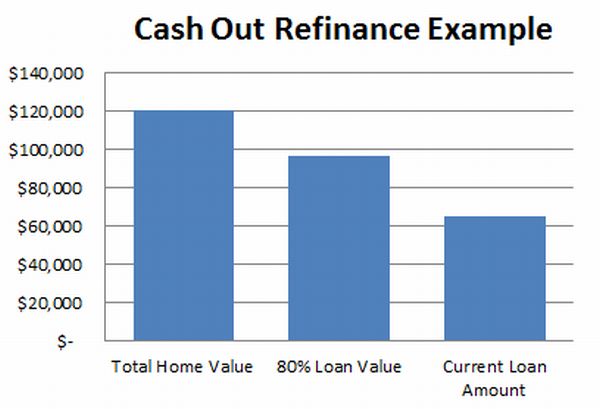What is an Adjustable Rate Mortgage (ARM) and How Does it Work?
 Borrowers should know what is an adjustable rate mortgage before choosing a loan for their home acquisition. The definition of adjustable rate mortgage (ARM) applies to loans with changing interest rates.
Borrowers should know what is an adjustable rate mortgage before choosing a loan for their home acquisition. The definition of adjustable rate mortgage (ARM) applies to loans with changing interest rates.
The rates on this type of loan usually start with lower payment amounts than mortgages with fixed rates. However, ARM payments can vary greatly and borrowers can end up owing more than the original loan amount even if no payments were missed. Some ARMs even have penalty fees for early pay offs.
Moreover, interest rates for ARMs can periodically change, generally based on indexes, which can cause payments to go up or down. Main aspects to know before choosing an ARM are margins, indexes, adjustment periods, caps on payments, and payment options.
Based on these aspects, borrowers should consider whether higher payments would be manageable if interest rates increase. As such, customers must ponder if their income will be sufficient for the duration of the loan and if more debt would be needed to pay for other expenses like education.
There are many loan providers that offer ARMs to borrowers. ARMs are available via credit unions, mortgage brokers, mortgage institutions, and banks. Here are the basic concepts to know how adjustable rate mortgage work.
Adjustment Period
Most ARMs have monthly payments and interest rates that change on a monthly or yearly basis. The time between interest rate changes is called adjustment period. An adjustable rate mortgage example would be a loan with an adjustment period of one year called a one-year ARM, where the interest rate would only be able to change once every year.
Initial Payment and Rate
The initial payment amount and rate for ARMs stay the same for a limited time that could range from one month up to an average of five years based on the loan’s terms. In addition, certain ARMs have payments and rates that change greatly from the initial ones. Changes on payment amounts and rates can even happen in an economy with stable interest rates. Check for the APR (annual percentage rate) and the initial rates before signing the loan contract. The higher the difference between initial rates and the APR usually means that once the loan adjusts, higher rates and payments will be required regardless of the market’s interest rates.
ARM Index
The ARM index is a measurement of general interest rates that affect the loan. A higher index rate generally means higher interest rates and monthly payments. Meanwhile, lower index rates result in lower monthly payments. There are many indexes used by lenders for ARMs.
The most common indexes are the London Interbank Offered Rate (LIBOR), 1-year constant maturity Treasury (CMT) securities, and the Cost of Funds Index (COFI). Some lenders use their related fund costs as indexes. Ask lenders about which index is to be used on your loan with information on past performances to prepare a budget accordingly.
ARM Margin
The ARM margin is the percentage points added by lenders to set interest rates. The ARM usually remains the same throughout the loan, but the margin amount can change between lenders.
Certain lenders base their ARM margin on the borrower’s credit history, which can directly influence the monthly payment amounts. Both the margin and index should be checked when deciding which ARM to choose.
ARM Interest-Rate Cap
An ARM interest rate cap limits the amount under which an interest rate can increase. There are two kinds of interest rate caps, which are lifetime, and periodic adjustment caps. A lifetime cap limits interest rates increments throughout the duration of the loan. Furthermore, a periodic adjustment cap can have downward or upward adjustments on sequential adjustment periods after the first one.
ARM Payment Caps
Payment caps limit the monthly payment amount to be increased in case adjustments are done. For instance, mortgages with a payment cap of 6% cannot have monthly payments increase over 6% from the previous payment even if interest rates are much higher.
ARMs Types
There are three main types of ARMS:
1. Hybrid. Hybrid ARMs are mixed loans with adjustable and fixed rate periods. Hybrid ARMs have initial fixed rates that adjust over time as per the loan agreement.
2. Interest only. Interest only ARMs enable borrowers to pay only the interest for a predetermined time. Monthly payments increase after the interest only period is over since the principal is added to calculate following payments.
3. Payment option. Adjustable rate mortgages that enable the borrower to select various payment options on a monthly basis are called payment option ARMs. Borrowers can choose between limited, interest only, or traditional principal and interest payment options.
What is an arm mortgage? This is a frequently asked question made by borrowers. Borrowers should become familiar with all the different types of ARMs to obtain the best loan option based on their available income and savings. Read the entire ARM conditions, terms, margin, and index information to know which mortgage to choose. Further information and resources on ARMs can be found at the Federal Reserve’s website section under mortgages.
This article is provided courtesy of Bad Credit Loans Direct, a consumer finance website providing information and tools on small loans for bad credit and other personal credit services.






